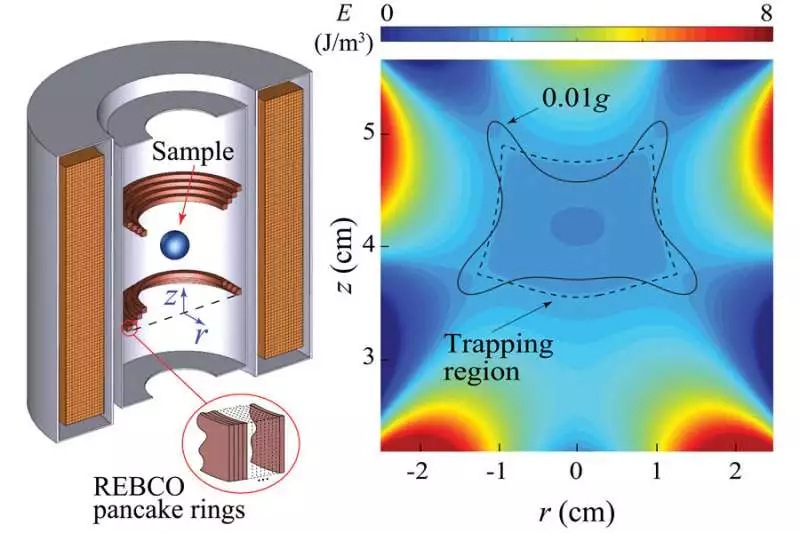A team of scientists at the FAMU-FSU College of Engineering and Florida State University's National High Magnetic Field Laboratory have come up with a new design for a magnetic levitation-based low-gravity simulator that promises a huge increase in volume over existing simulators, with major benefits for space, medical and biology research.
The limitations of simulating low or zero gravity on Earth have long impaired space research. The cost and payload restrictions of actually sending experiments into space often makes that prohibitive. Additionally, researchers often require an extreme level of control over experiment conditions to produce reliable results. For this reason, even going into space sometimes isn't enough.
An example of this is the International Space Station (ISS), which, in its original design, included a dedicated microgravity lab and a low-gravity centrifuge. Unfortunately, it turned out that having astronauts moving about the station, plus all the pumps and other machinery needed to provide life support, created too much vibration, so the idea was scrapped.
This is unfortunate because low gravity affects biological systems, fluid dynamics, heat transfers, and how materials form and grow. This can seriously affect setting up outposts or colonies on the Moon or Mars, so the need for low-gravity studies has boomed in recent years.

Using so-called "vomit comet" aircraft on parabolic trajectories can simulate low gravity for up to a few minutes, but that's too short a time to be practical – drop towers provide even less time. On the other hand, with Magnetic Levitation-based Simulators (MLS) it's possible to simulate low gravity at adjustable levels to about one percent of Earth's gravity at low cost for indefinite time. However, with current technology the volume is limited to only a few microliters.
But the Florida State team found that by using an 8-inch (20-cm) high-temperature superconducting Maxwell coil, which can produce a magnetic field with a large volume of almost constant gradient for minimal energy, it's possible to build an MLS with a volume of 4,000 microliters. If it's set to the gravity of Mars, which is only a third of Earth's, the volume expands to 20 cm³ (1 in³).
"The fact that our MLS design offers a functional volume about three orders of magnitude larger than that for conventional solenoid MLSs makes it a potential game-changer in the low-gravity research field," says Wei Guo, associate professor in mechanical engineering and lead scientist on the study. "When this MLS design is used to emulate reduced gravities in extraterrestrial environments, such as on the Moon or Mars, the resulting functional volume is large enough to accommodate even small plants, making this an exciting tool for medical and biology research."
The research was published in npj Microgravity.
Source: Florida State University





